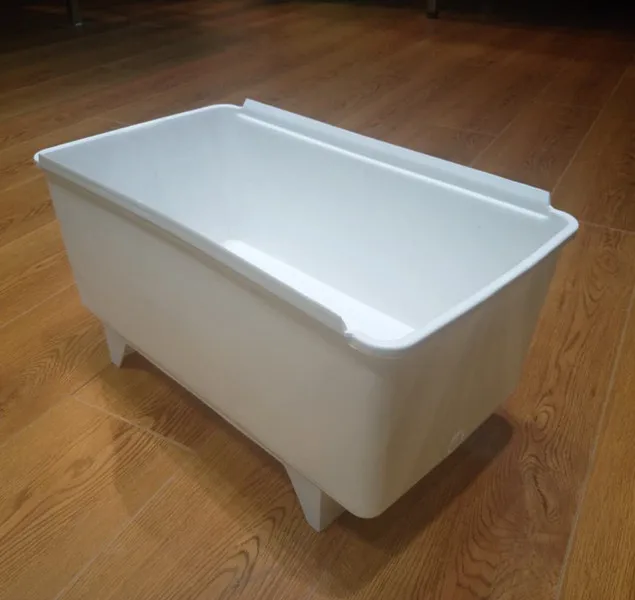
The roots of plants come into direct contact with the nutrient-rich fluid instead of soil to grow them. Hydroponics is a method of cultivating plants in which they are engrossed in a nutrient-rich water solution. The Fundamental Science behind Hydroponics

With similar effectiveness, they may be used to cultivate a few plants in your garden or hundreds of crops for commercial sales. The majority of hydroponic systems are quite scalable. This value indicates the outlet water pressure, for example a head of 2.8 meters indicates a pressure of 0.28 bar.While some individuals utilize hydroponics as a business and quit their jobs to focus only on farming, this is not required. The head is expressed in meters and means at what height the pump is able to push the water. This value is intended as empty, in fact the flow rate is reduced according to the length and diameter of the outlet tube, any curves, climbs and obstacles in general. The flow rate is expressed in l / h (liters per hour) and determines the quantity of water that the pump is able to transfer in one hour. There are various models on the market that mainly stand out for their characteristics: flow rate and prevalence. The water pump is the heart of the system, it will have to push the solution with a certain pressure along the distribution backbone and must therefore be sized to the number of drippers it will serve. Una temperatura dell’acqua compresa tra i 18 e 22 gradi aiuta a mantenere buoni livelli di ossigeno disciolto (DO) ed evita il proliferare di batteri anaerobi responsabili di malattie e marciumi radicali. E’ buona norma (quando possibile) interrare la vasca di raccolta per preservare la soluzione dal riscaldamento, cosa molto comune quando si coltiva in serra durante i periodi estivi. In oltre la vasca di raccolta dovrà essere dotata di coperchio e schermata dai raggi luminosi per evitare la conseguente formazione di alghe. If greater autonomy is desired, the reservoir capacity must be increased or an automatic refilling system must be inserted (see floating valve). The tank must have a volume of 48 liters + a reserve of at least another 150 liters to guarantee an autonomy of about 4 days. Taking into account that the Dutch vase holds about 2 liters of water on the bottom before reaching the level necessary for drainage, the tank must have an adequate volume to contain sufficient water.Įach jar contains 2 liters of water therefore 24 x 2 = 48 liters When sizing the tank, it will be necessary to take into account the number of jars to be fed. When preparing the drain line, a slight slope must be provided in order to facilitate the flow of the drainage solution towards the tank. There are also types of PVC pipes with a sort of glass with a gasket that allows the fitting of fittings and extensions without the use of glue.

PVC pipes require dedicated fittings which must be mounted with the help of a special PVC glue. It consists of a 50mm diameter PVC tube, along which 26mm holes are drilled for inserting the vessel drain. The drain line has the function of collecting the drainage solution from the vessels and returning it to the tank. Rubber pipe fittings D 16MM (tee, elbow, plug, valves).Solution distribution line in multilayer PE pipe PN4 (white / black) diameter 16 mm.

Drain / drain line consisting of 50mm PVC pipe.To build a Dutch Buckets system you need to:
Bato bucket how to#
HOW TO CREATE A HYDROPONIC SYSTEM WITH DUTCH BUCKETS 1.3 Solution Collection Tank / Reservoir.1 HOW TO CREATE A HYDROPONIC SYSTEM WITH DUTCH BUCKETS.The excess solution will be drained along the drain hose back to the main tank. The Dutch pot is a plastic pot, available in volumes of 10 or 12 liters, with a particular shape that allows it to be positioned along a 50mm PVC drain pipe which collects the drainage of the solution and conveys it to the collection tank of the solution.Ī pump will push the nutrient solution from the tank or reservoir, this will be distributed through a drop system directly into the respective vessels, bringing water and nourishment to the roots of the plants. Plants grown with this system grow with roots in a substrate consisting mainly of expanded clay or perlite or a mixture of the two. The hydroponic cultivation systems with Dutch Buckets, have been used for many years for the production of vegetables both in large commercial greenhouses and for domestic use.Ī hydroponic system with Dutch vases lends itself particularly well to customizations and can be adapted to any type of environment.


 0 kommentar(er)
0 kommentar(er)
